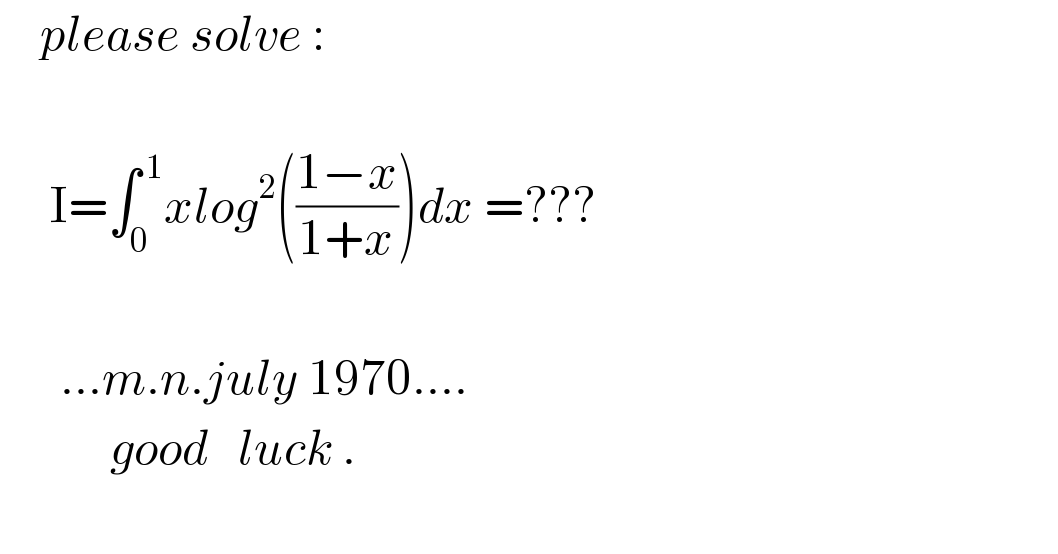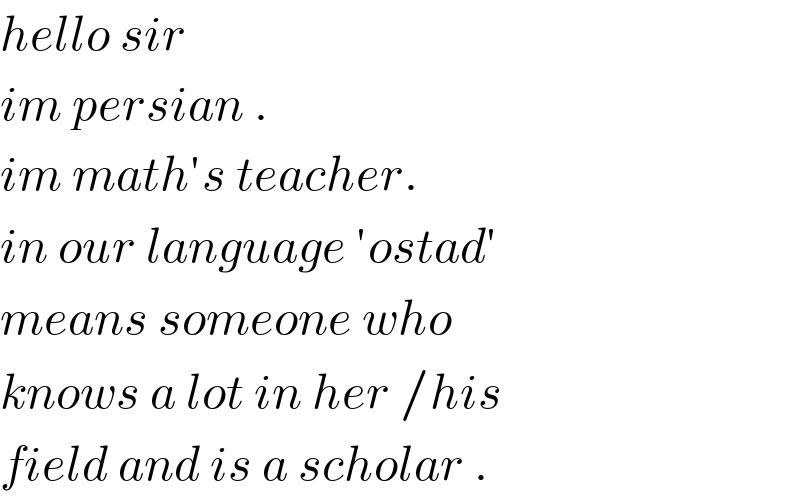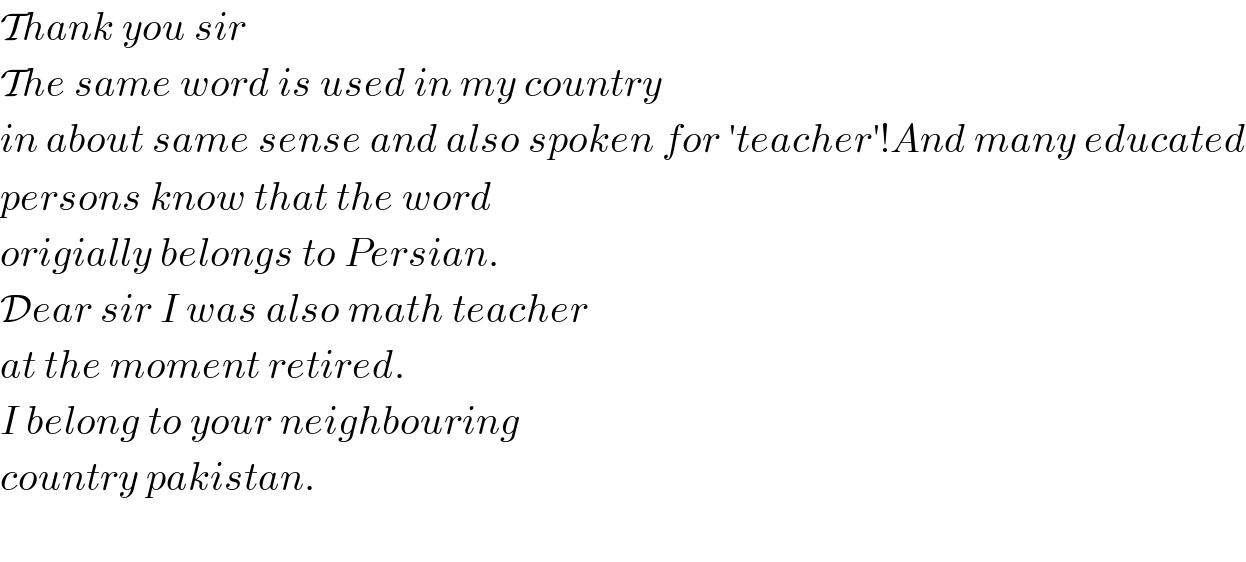
Question and Answers Forum
Question Number 112545 by mnjuly1970 last updated on 08/Sep/20

Commented by MJS_new last updated on 08/Sep/20

Commented by mnjuly1970 last updated on 08/Sep/20

Answered by MJS_new last updated on 08/Sep/20
![∫xln^2 ((1−x)/(1+x)) dx= [t=(2/(x+1)) → dx=−(((x+1)^2 )/2)dt] =2∫((t−2)/t^3 )ln^2 (t−1) dt= =2∫((ln^2 (t−1))/t^2 )dt−4∫((ln^2 (t−1))/t^3 )dt 2∫((ln^2 (t−1))/t^2 )dt= [by parts] =−2((ln^2 (t−1))/t)+4∫((ln (t−1))/(t(t−1)))dt= =−2((ln^2 (t−1))/t)+4∫((ln (t−1))/(t−1))dt−4∫((ln (t−1))/t)dt −4∫((ln^2 (t−1))/t^3 )dt= [by parts] =2((ln^2 (t−1))/t^2 )−4∫((ln (t−1))/(t^2 (t−1)))dt= =2((ln^2 (t−1))/t^2 )−4∫((ln (t−1))/(t−1))dt+4∫((ln (t−1))/t)dt+4∫((ln (t−1))/t^2 )dt ⇒ we now have 2∫((t−2)/t^3 )ln^2 (t−1) dt= =−2((ln^2 (t−1))/t)+2((ln^2 (t−1))/t^2 )+4∫((ln (t−1))/t^2 )dt= =2((1−t)/t^2 )ln^2 (t−1) +4∫((ln (t−1))/t^2 )dt 4∫((ln (t−1))/t^2 )dt= [by parts] =−4((ln (t−1))/t)+4∫(dt/(t(t−1)))= =−4((ln (t−1))/t)+4ln (t−1) −4ln t ⇒ we now have 2∫((t−2)/t^3 )ln^2 (t−1) dt= =((4(t−1))/t)ln (t−1) −((2(t−1))/t^2 )ln^2 (t−1) −4ln t = =(((x^2 −1))/2)ln^2 ((1−x)/(1+x)) −2(x−1)ln ((1−x)/(1+x)) +4ln (x+1) +C ⇒ ∫_0 ^1 xln^2 ((1−x)/(1+x)) dx=4ln 2](Q112565.png)
Commented by mnjuly1970 last updated on 08/Sep/20

Commented by Rasheed.Sindhi last updated on 08/Sep/20

Commented by mnjuly1970 last updated on 08/Sep/20

Commented by MJS_new last updated on 08/Sep/20

Commented by mnjuly1970 last updated on 08/Sep/20

Commented by Rasheed.Sindhi last updated on 09/Sep/20

Commented by kaivan.ahmadi last updated on 09/Sep/20

Commented by Rasheed.Sindhi last updated on 09/Sep/20

Commented by mnjuly1970 last updated on 09/Sep/20

Commented by kaivan.ahmadi last updated on 09/Sep/20

Answered by ajfour last updated on 08/Sep/20
![ln (((1−x)/(1+x)))=t ⇒ ((1−x)/(1+x))=e^t ⇒ x=((1−e^t )/(1+e^t )) dx=−((2e^t dt)/((1+e^t )^2 )) question: I=∫_0 ^( 1) xln^2 (((1−x)/(1+x)))dx ⇒ I=2∫ ((t^2 (e^t −1)e^t dt)/((1+e^t )^3 )) =2∫t^2 F(t)dt ∫F(t)dt =∫(((e^t −1)e^t dt)/((1+e^t )^3 )) let e^t =z t=ln z ⇒ dt=(dz/z) ∫F(t)dt =∫ [(1/((z+1)^2 ))−(2/((1+z)^3 ))]dz = −(1/(1+z))+(1/((1+z)^2 )) =−(z/((1+z)^2 )) (I/2)=t^2 ∫F(t)dt−2∫t{∫F(t)dt}dt = (ln z)^2 {((−z)/((1+z)^2 ))}∣_1 ^0 +2∫_1 ^( 0) (ln z)(dz/((1+z)^2 )) = 0+2(((ln z)/(1+z)))∣_0 ^1 +2∫_1 ^( 0) (dz/(z(1+z))) =0+[2(((ln z)/(1+z)))−2ln z+2ln (1+z)]_0 ^1 I = 2[−((2zln z)/(1+z))+2ln (1+z)]_0 ^1 I =2(0+2ln 2) = 4ln 2 .](Q112588.png)
Commented by mnjuly1970 last updated on 08/Sep/20

